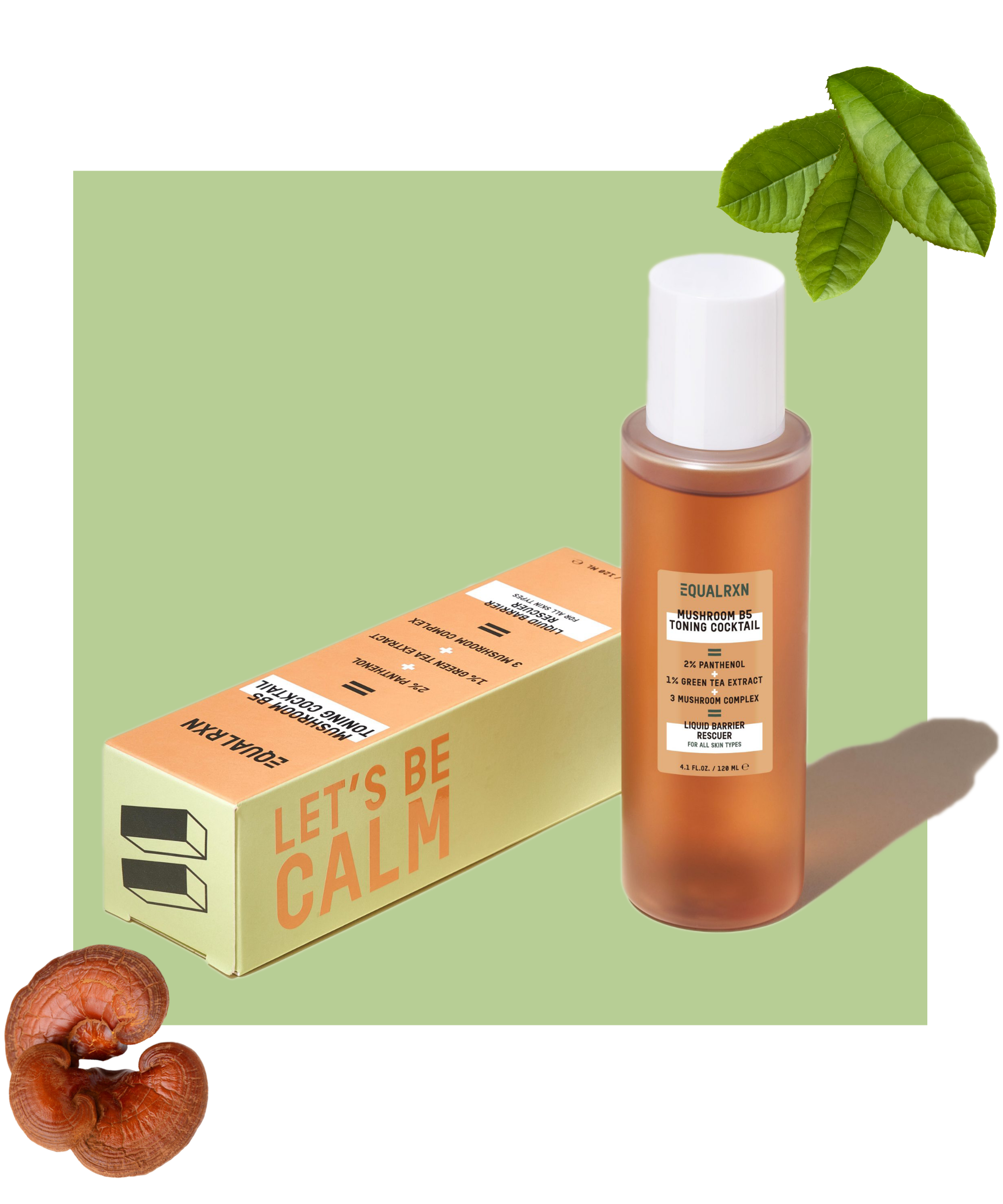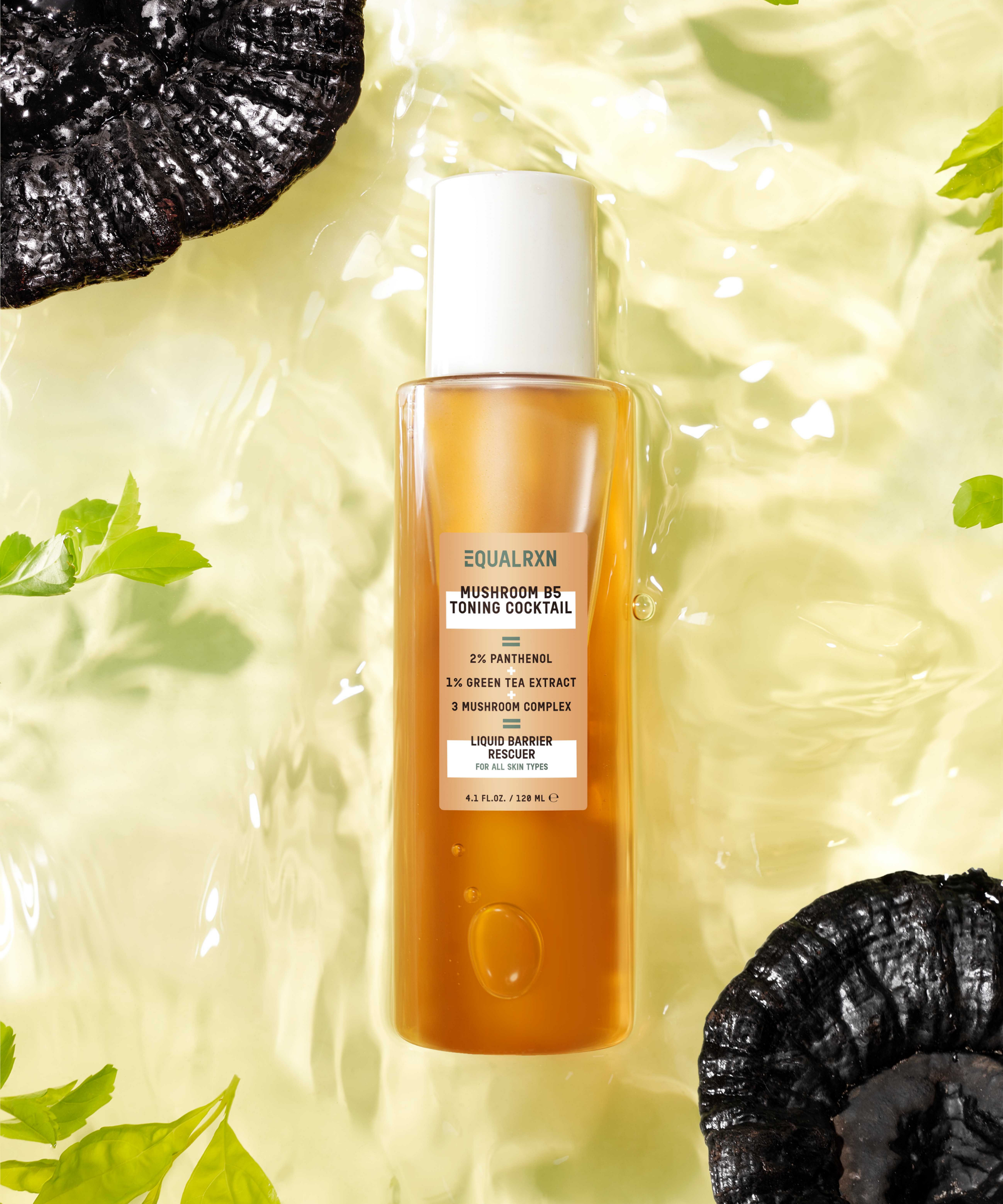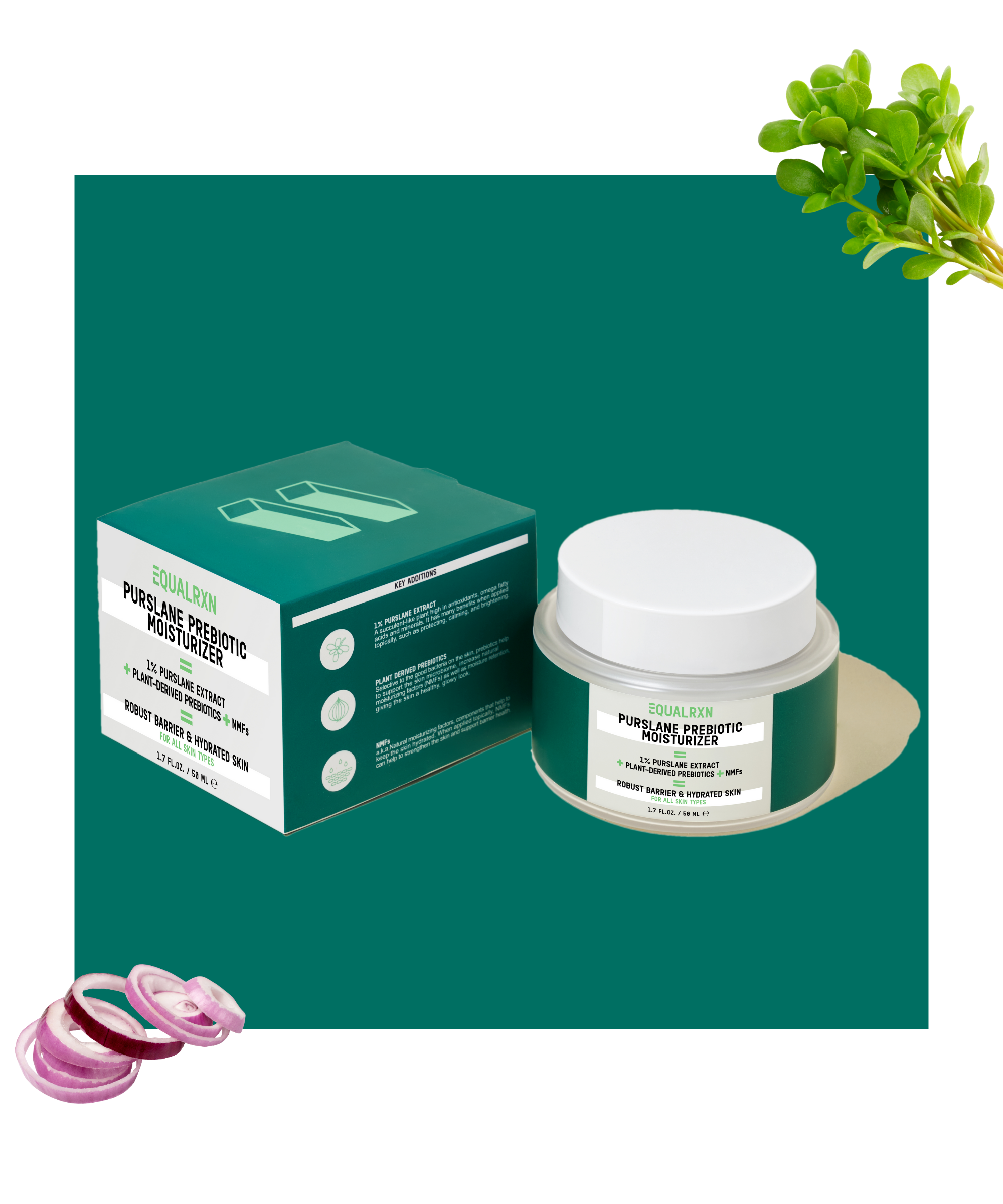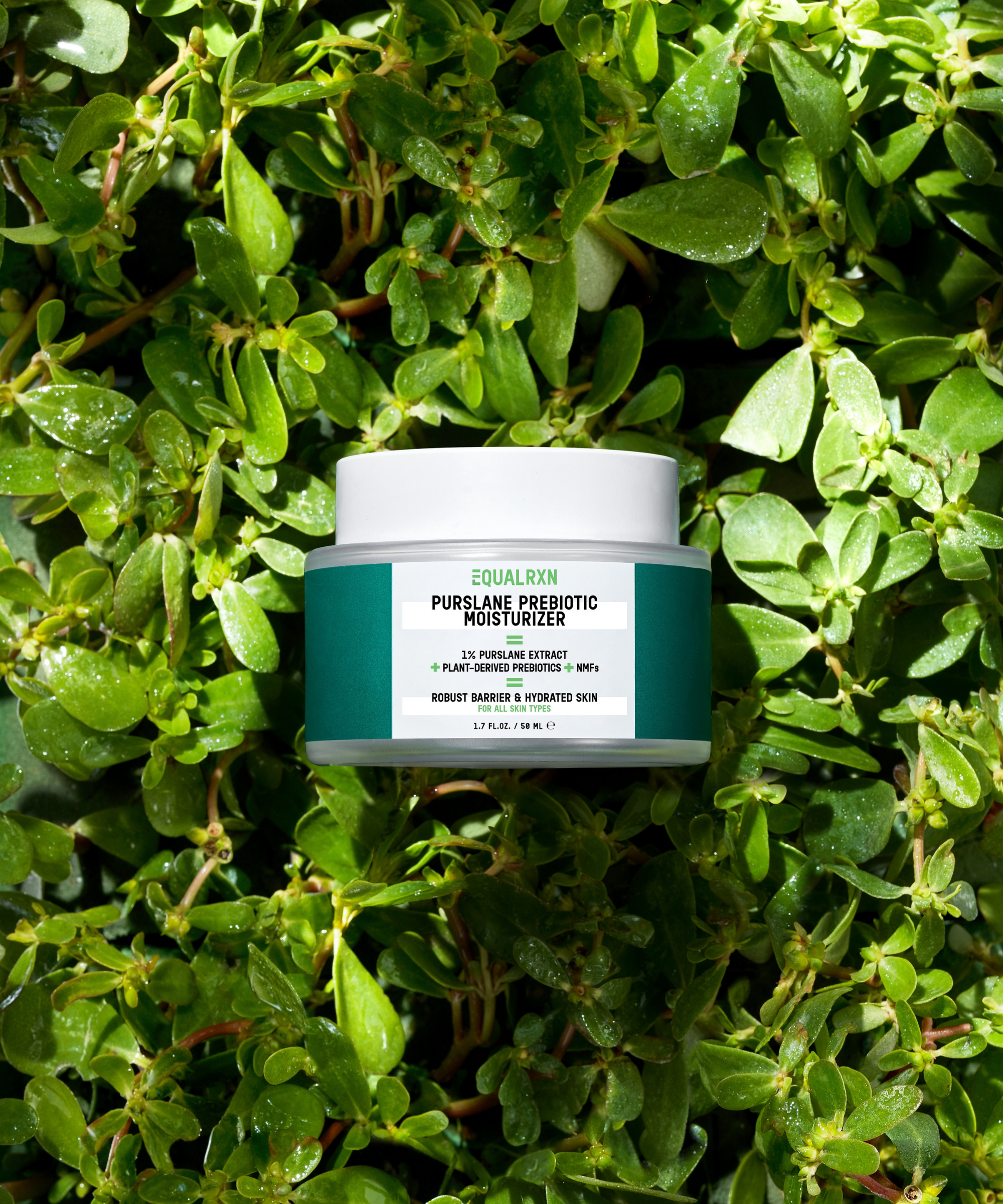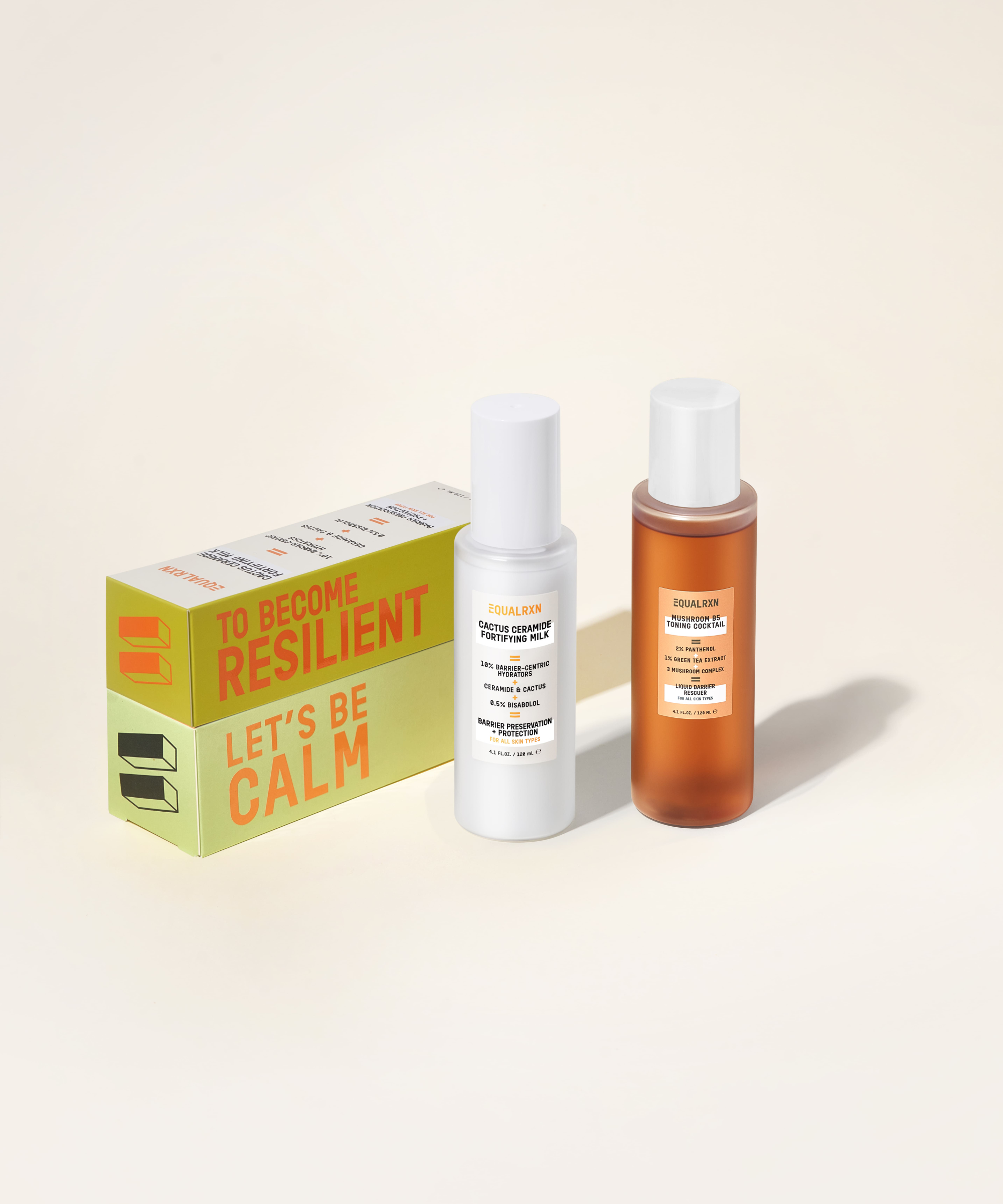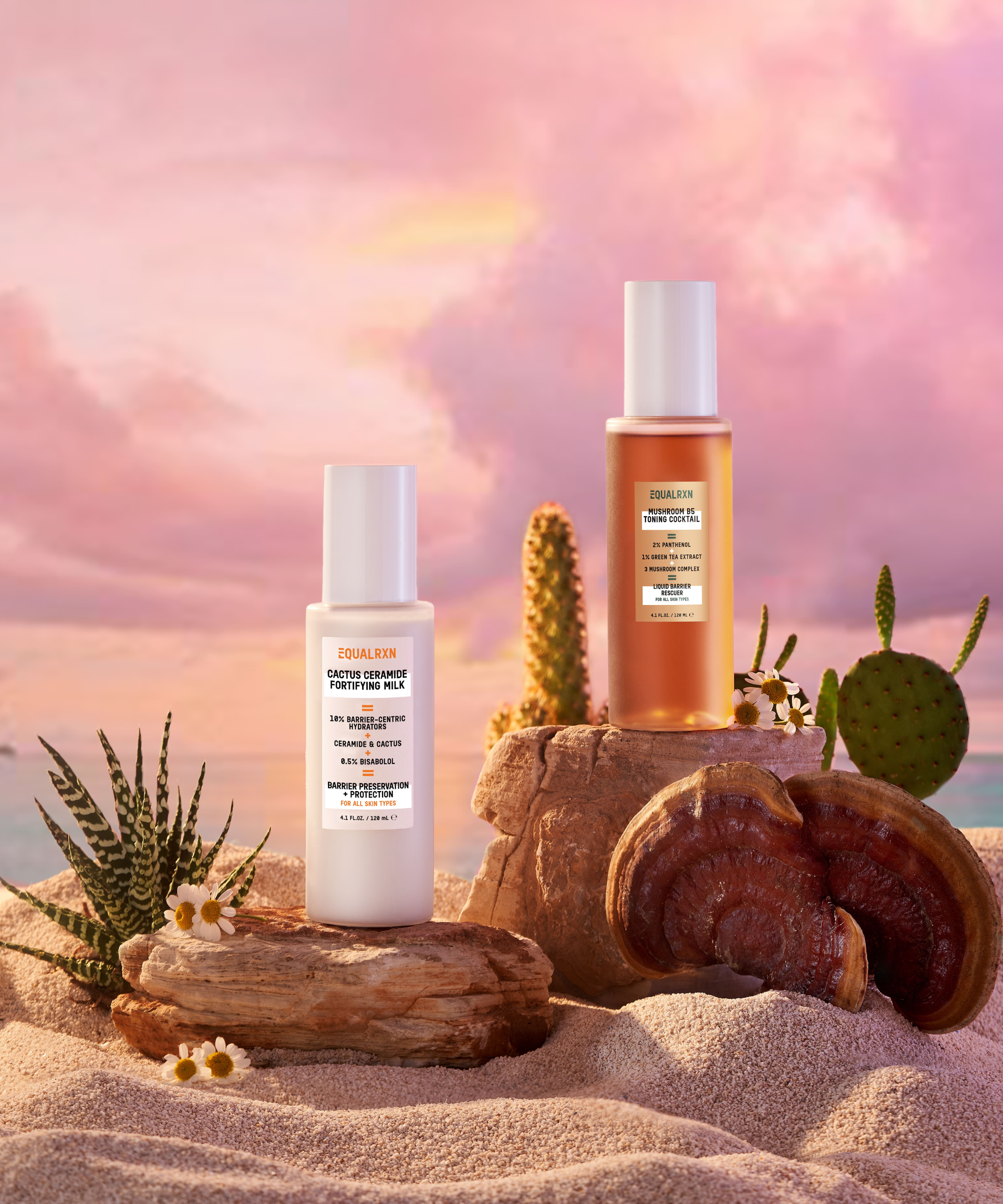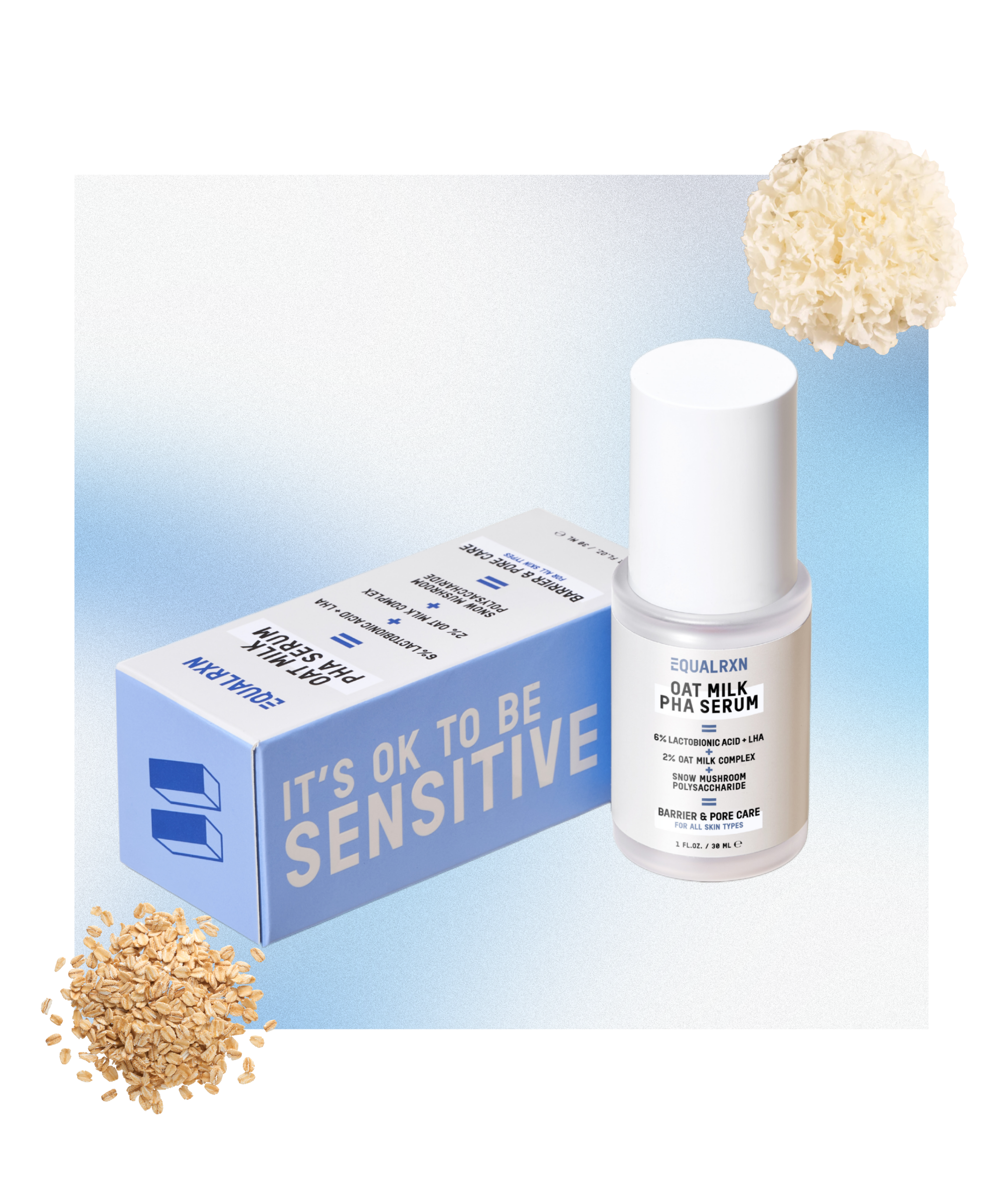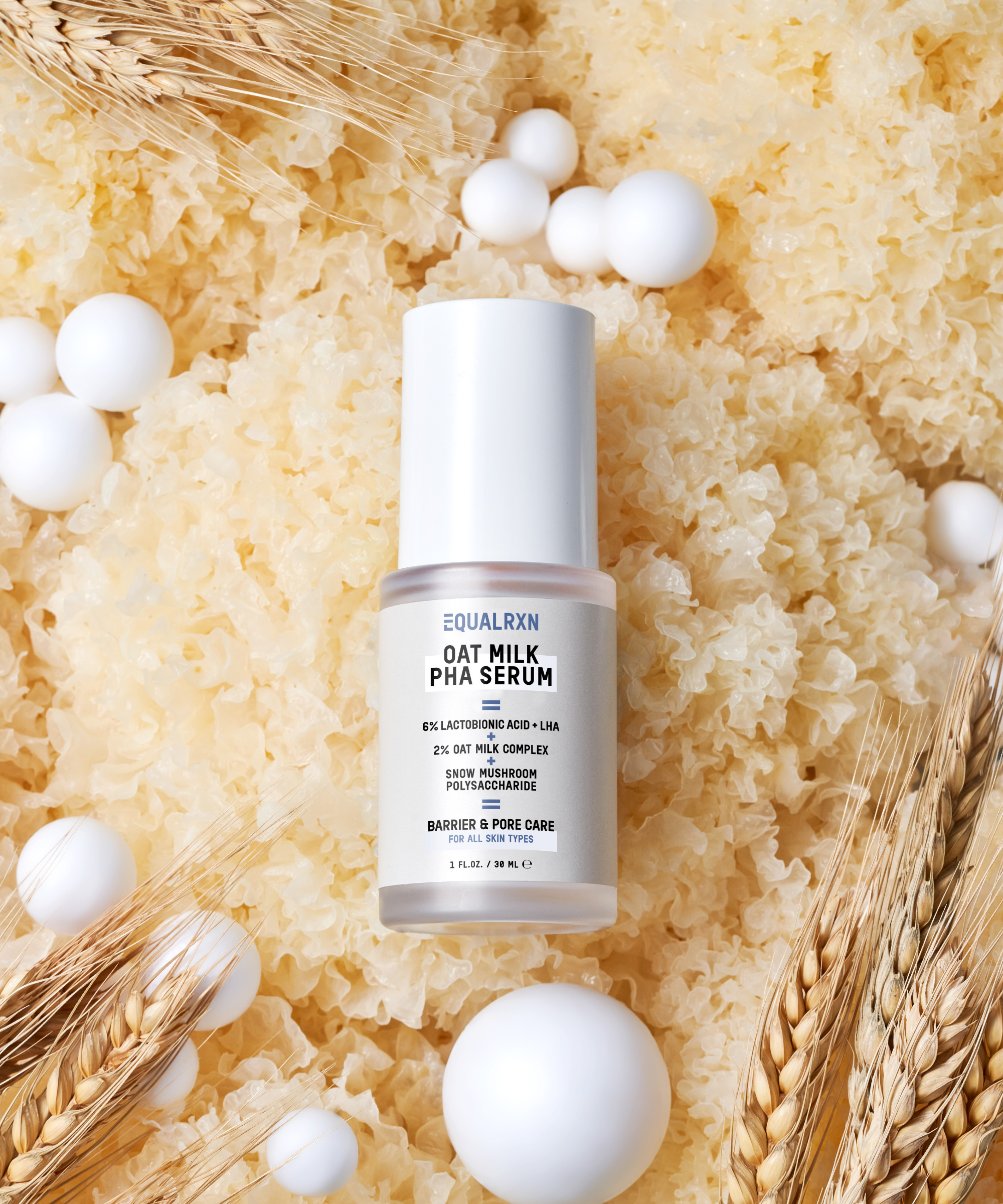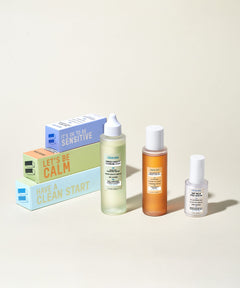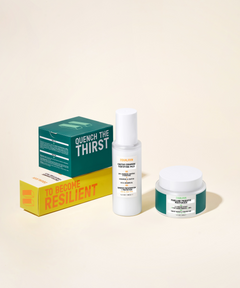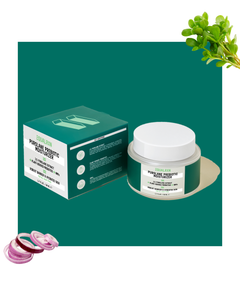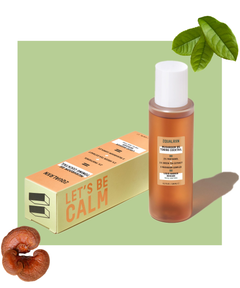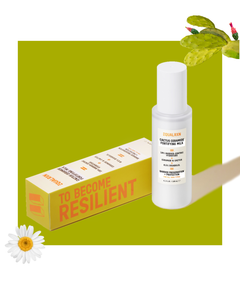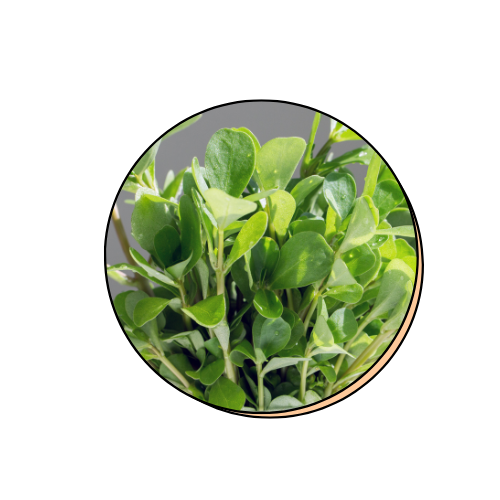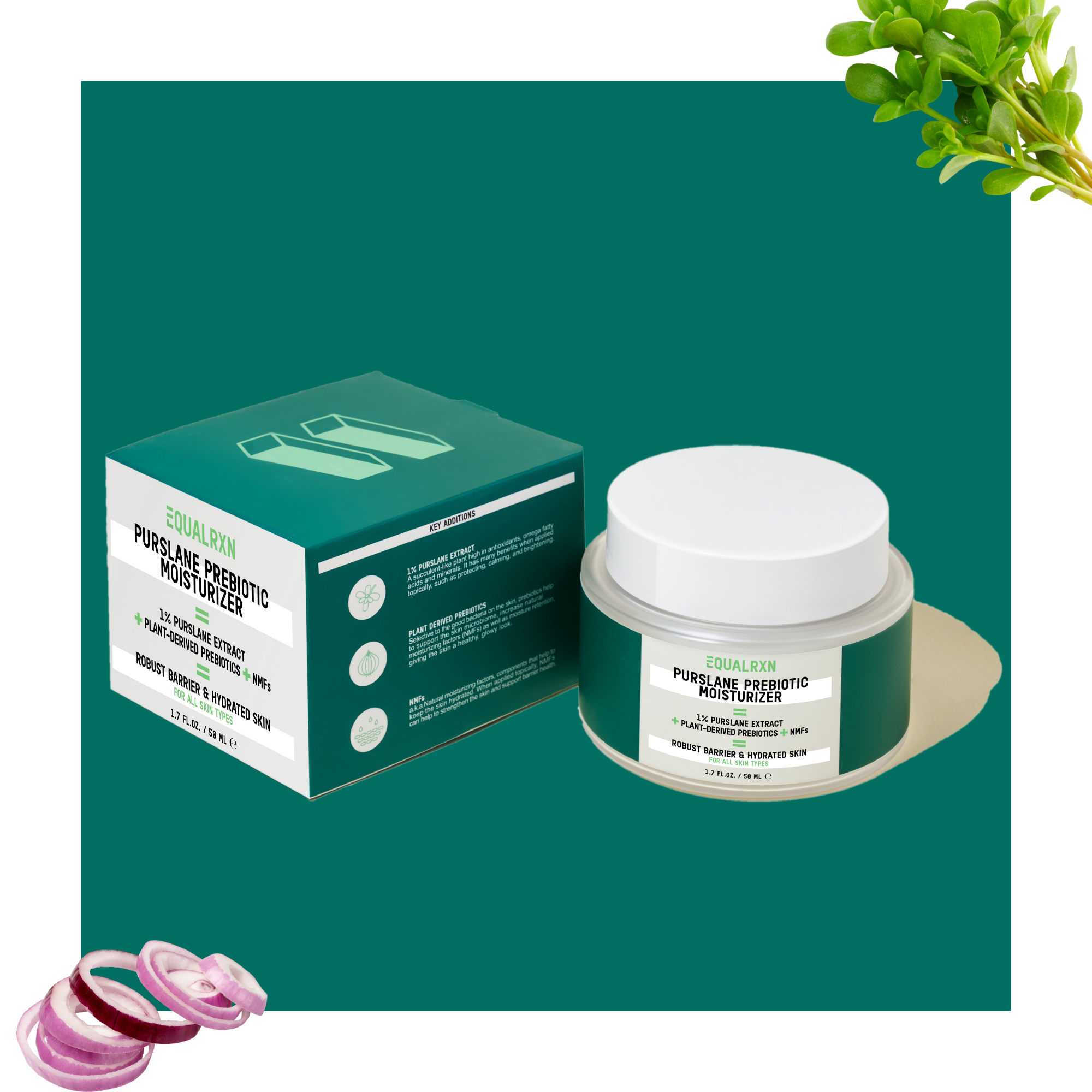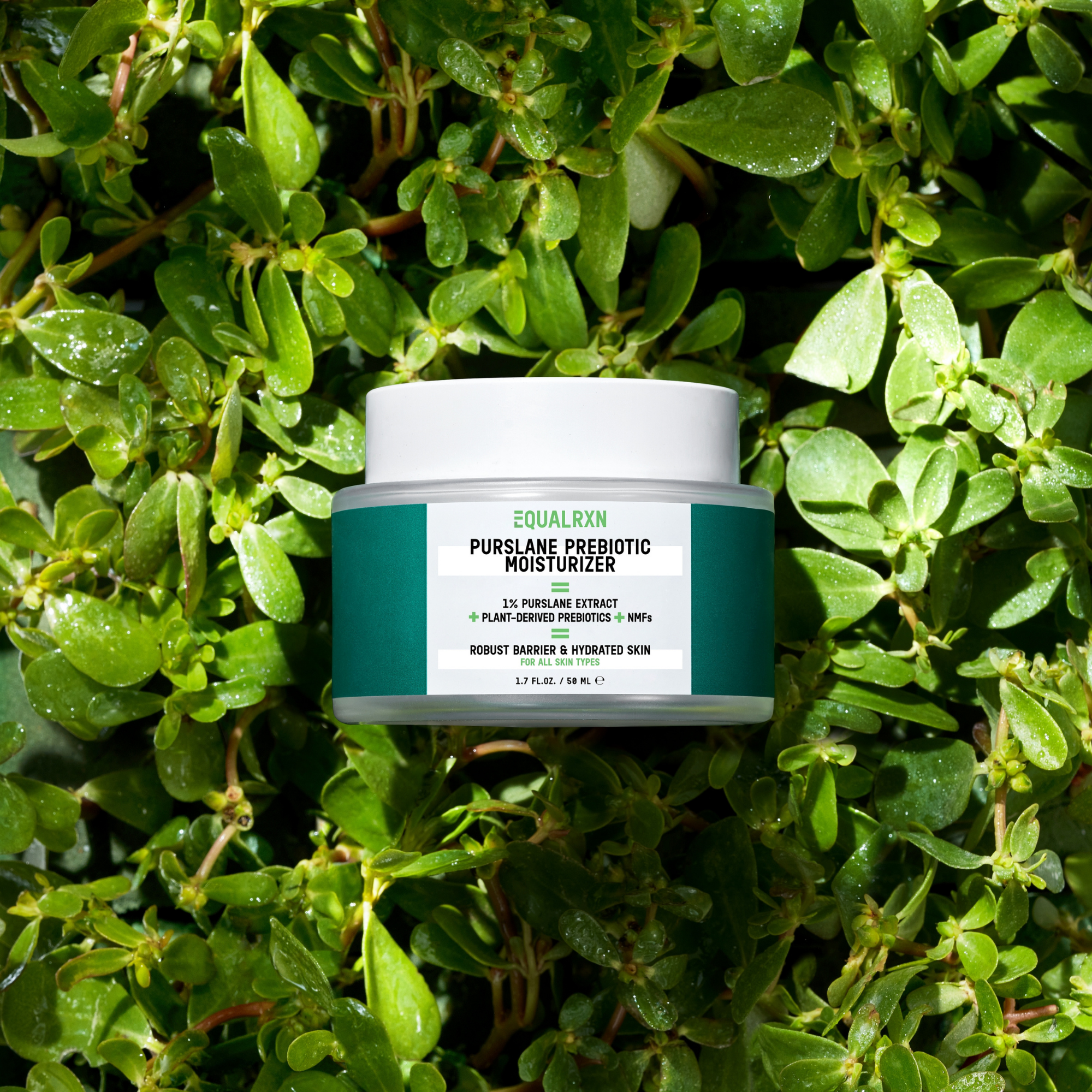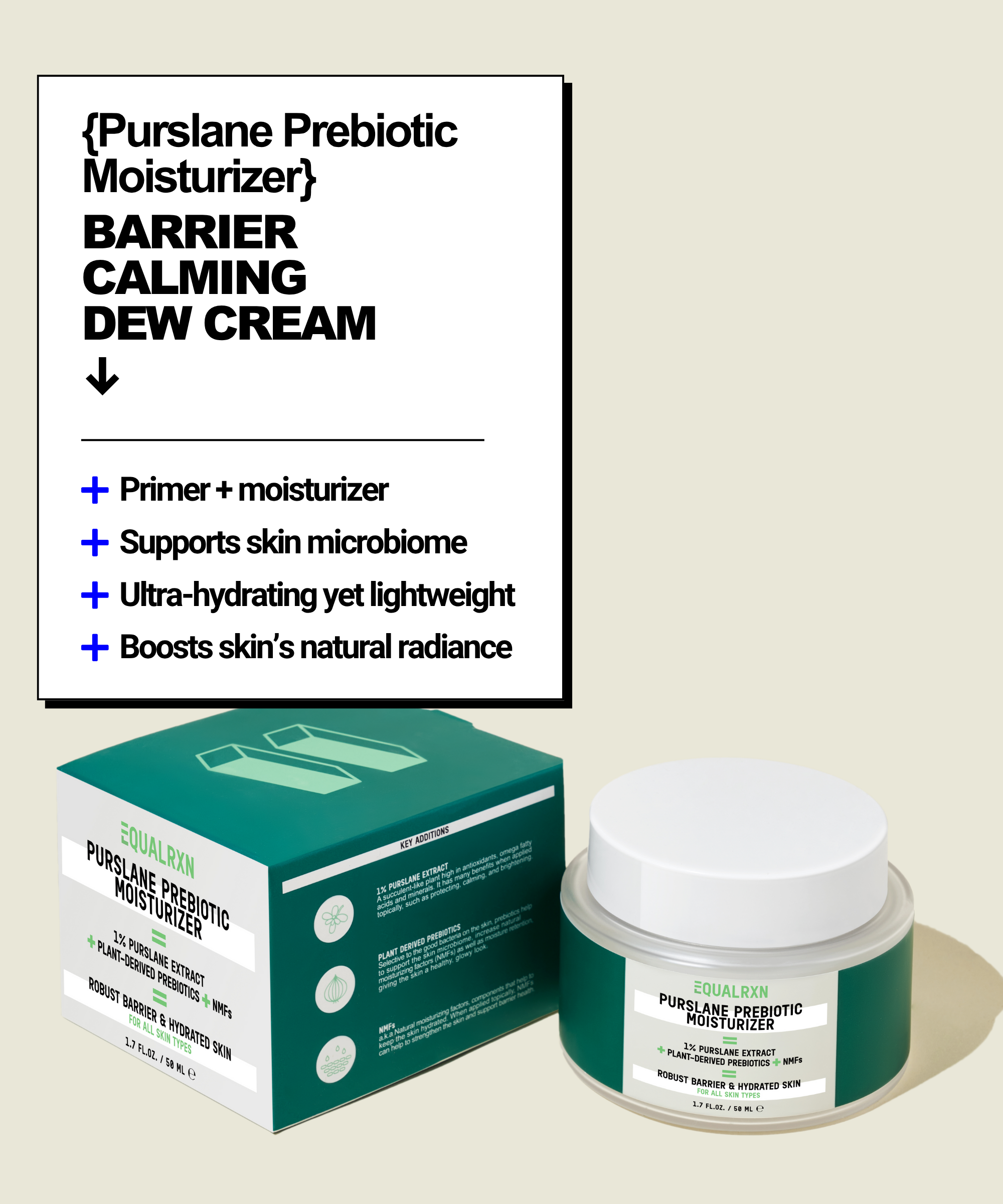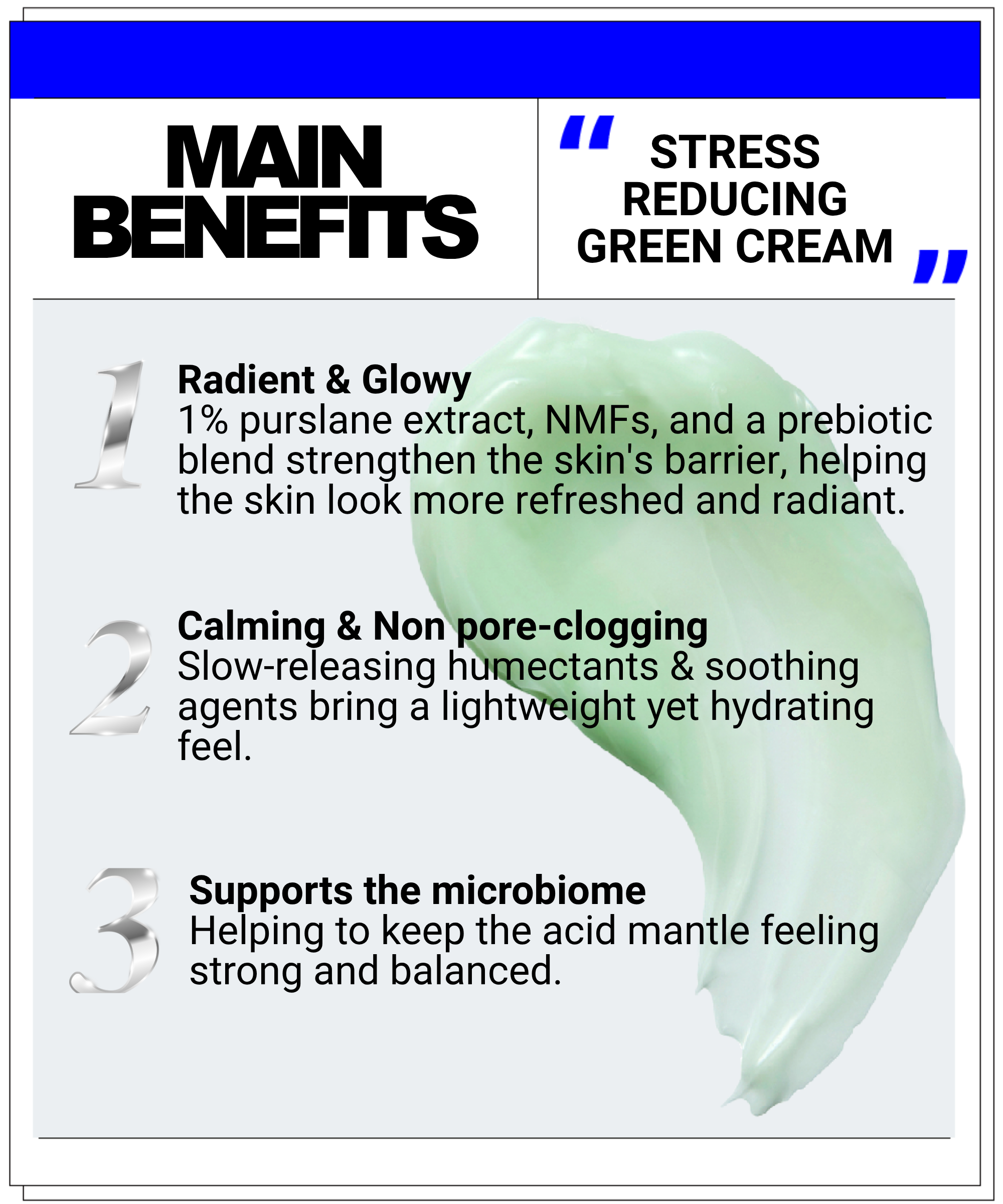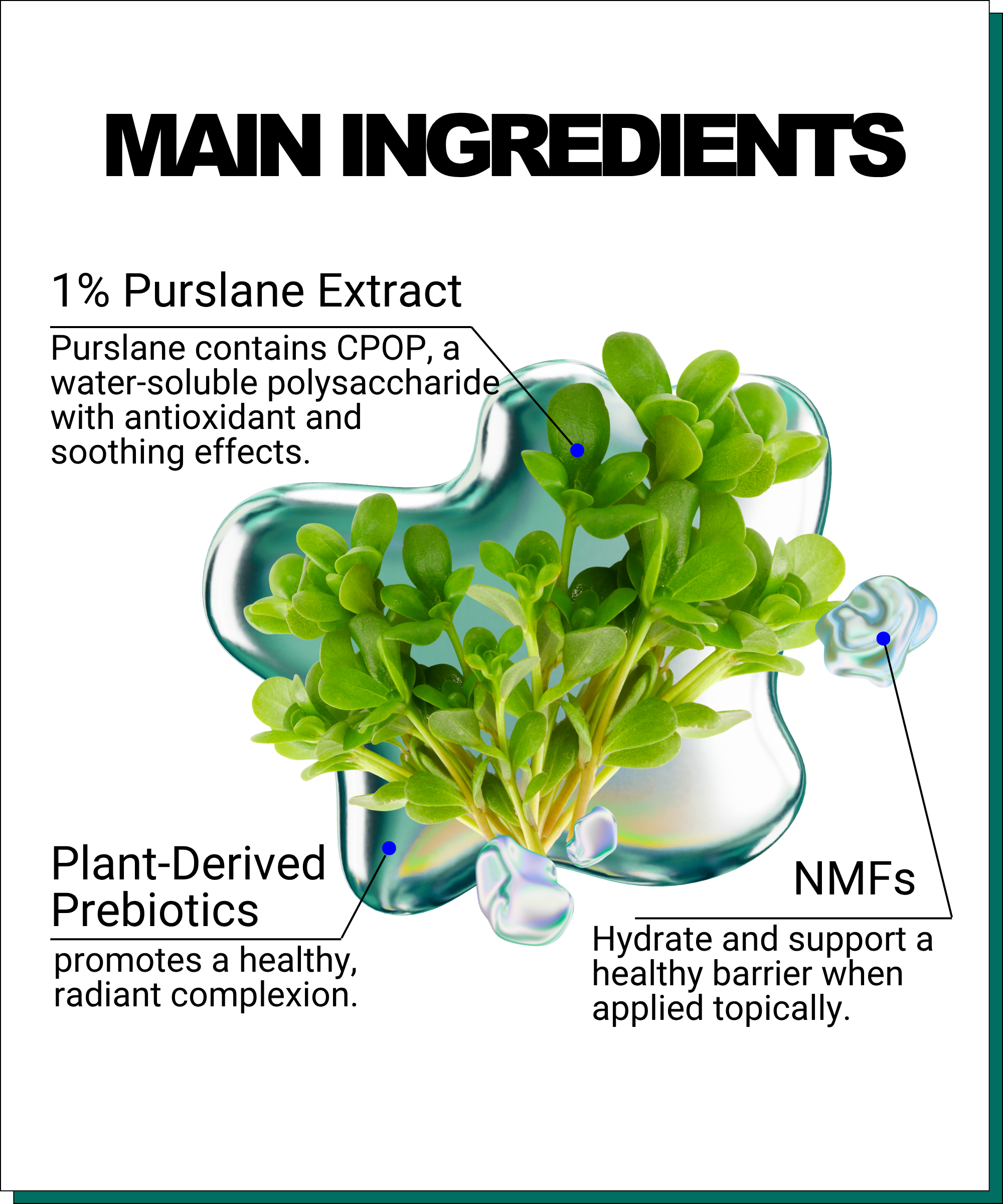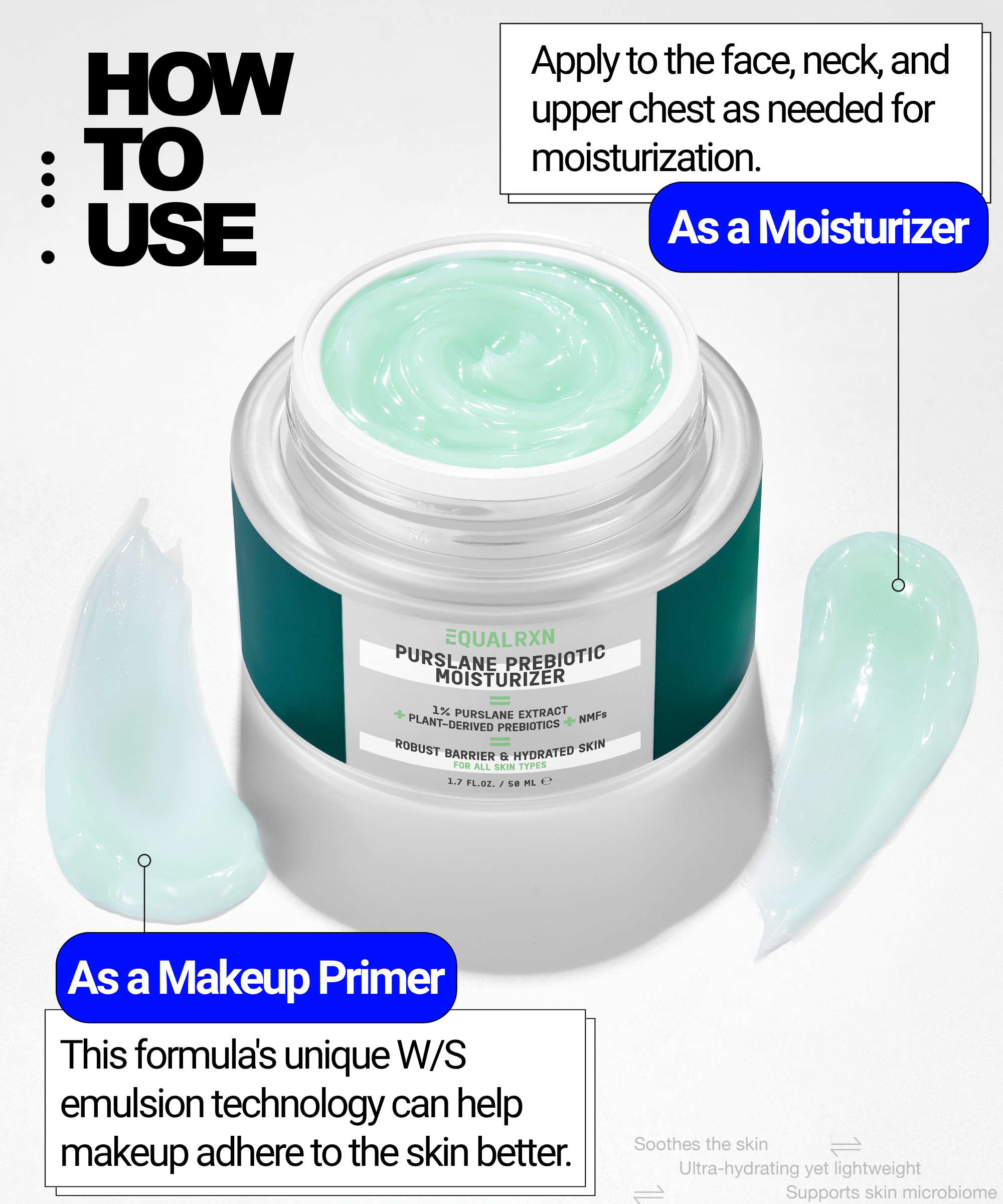What is Portulaca Oleracea Extract?
Portulaca oleracea extract, commonly known as purslane extract, is derived from the Portulaca oleracea plant, a succulent herb that is native to Asia, Europe, and North America. In skincare, this extract is utilized for its various beneficial properties. It is rich in antioxidants, vitamins (such as vitamin A, C, and E), minerals, and omega-3 fatty acids. Purslane extract is known for its soothing, anti-inflammatory, and moisturizing effects on the skin.
How does this ingredient work in skincare?
Portulaca oleracea extract, or purslane extract, functions in skincare through its rich array of bioactive compounds, including antioxidants, omega-3 fatty acids, and polysaccharides. Its antioxidant properties help neutralize free radicals, protecting the skin from oxidative stress and premature aging. Purslane extract also exhibits anti-inflammatory effects, soothing irritated skin and reducing redness and swelling. Additionally, its moisturizing properties support skin hydration by attracting and retaining moisture, while its potential to promote wound healing may aid in skin repair and regeneration.
How does this ingredient compare to others?
Compared to other ingredients like green tea extract, niacinamide, hyaluronic acid, and aloe vera, purslane extract offers a comprehensive approach to skincare, addressing a range of concerns from free radical damage and inflammation to hydration and potential wound healing. Its diverse array of bioactive compounds makes it a valuable addition to skincare formulations, providing broad-spectrum support for healthier, more radiant skin.
Potential benefits of this ingredient for the skin
Portulaca oleracea extract, or purslane extract, offers several potential benefits for the skin:
- Antioxidant Protection: Purslane extract is rich in antioxidants, such as vitamins A, C, and E, as well as flavonoids and phenolic compounds. These antioxidants help neutralize free radicals, protecting the skin from oxidative stress and premature aging.
- Anti-inflammatory Properties: Purslane extract exhibits anti-inflammatory effects, which can help soothe and calm irritated or inflamed skin. It may reduce redness, swelling, and discomfort associated with various skin conditions.
- Moisturization: The presence of polysaccharides and mucilage in purslane extract contributes to its moisturizing properties. It helps to attract and retain moisture in the skin, improving hydration levels and preventing dryness.
- Wound Healing Support: Some studies suggest that purslane extract may promote wound healing by stimulating the proliferation of skin cells involved in tissue repair and regeneration. It may accelerate the healing process and reduce the risk of scarring.
- Overall Skin Health: Purslane extract supports overall skin health by protecting against environmental damage, reducing inflammation, and promoting hydration. It contributes to a healthier, more radiant complexion and can be beneficial for various skin types and concerns.
Products we use this ingredient in
Purslane Prebiotic Moisturizer
References
- Wei, Jing et al. “Portulaca oleracea extract relieves skin barrier damage induced by increased photosensitivity after GA peeling.” Cutaneous and ocular toxicology vol. 41,3 (2022): 257-263. doi:10.1080/15569527.2022.2109658
- Qu, Liping et al. “The extract from Portulaca oleracea L. rehabilitates skin photoaging via adjusting miR-138-5p/Sirt1-mediated inflammation and oxidative stress.” Heliyon vol. 9,11 e21955. 7 Nov. 2023, doi:10.1016/j.heliyon.2023.e21955

